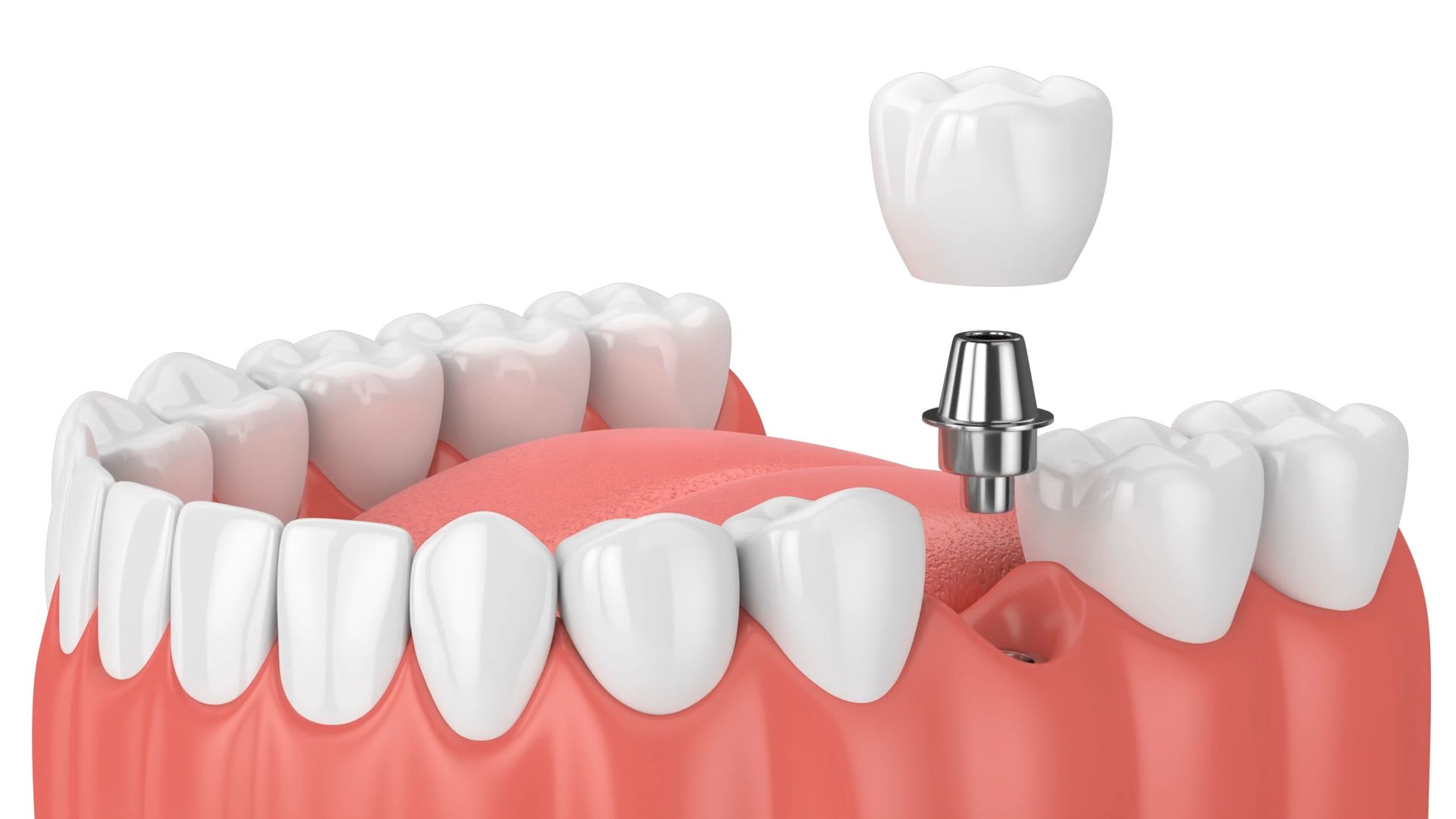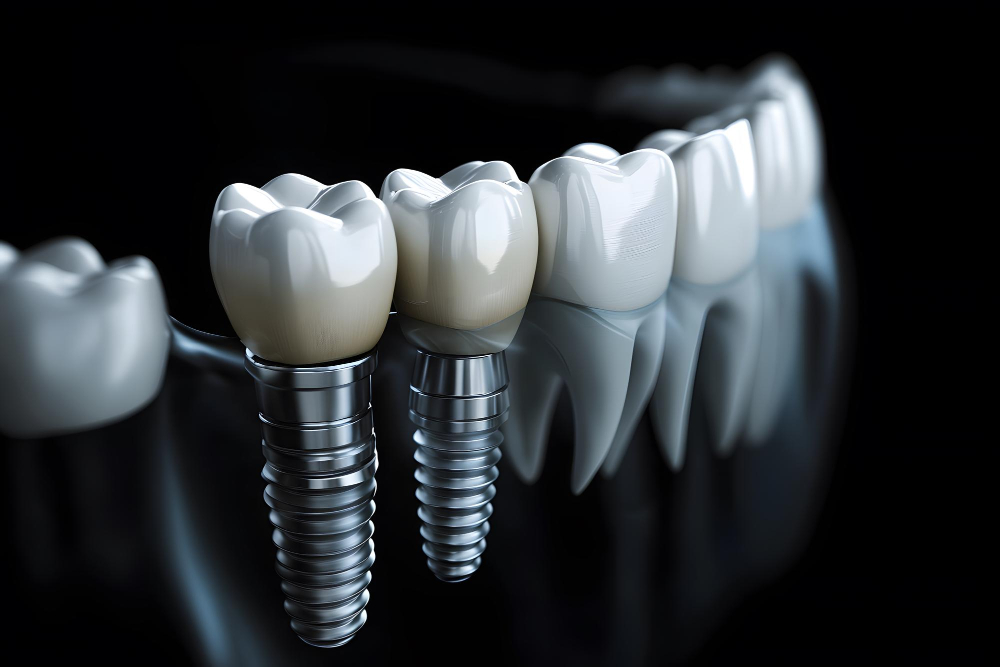
Losing a tooth can be a challenging experience, not just from an aesthetic standpoint but also for your overall oral health and functionality. Whether due to injury, decay, or age-related wear, missing teeth can affect how you speak, chew, and smile. Fortunately, dental implants offer a revolutionary solution to restore your confidence and oral health. Unlike traditional dentures or bridges, dental implants are a permanent, durable, and natural-looking solution for missing teeth.
In this comprehensive blog, we’ll delve into the world of dental implants, explaining what they are, how they work, the benefits they offer, and why they are considered the best option for replacing missing teeth. We’ll also discuss the procedure, aftercare, and address common myths surrounding dental implants. By the end of this post, you’ll have a clear understanding of why dental implants are often the ideal choice for people seeking a permanent solution for missing teeth.
What Are Dental Implants?
A dental implant is a titanium post or frame that is surgically placed into the jawbone beneath the gums to serve as a replacement root for a missing tooth. Once in place, a crown, bridge, or denture is attached to the implant, providing a natural-looking and functional replacement for the missing tooth. Implants are the most advanced form of tooth replacement available and are designed to mimic the function and appearance of natural teeth as closely as possible.
Unlike traditional dentures or bridges, dental implants do not rely on adjacent teeth for support. They stand on their own, providing a stable foundation for replacement teeth. The biocompatibility of titanium with the jawbone allows the implant to fuse with the bone through a process called Osseo integration, making it a permanent and sturdy solution.
The Components of a Dental Implant
A dental implant consists of three main components:
- The Implant (The Root)
The implant is a small titanium post that is surgically embedded into the jawbone. It acts as the root of the missing tooth and provides a foundation for the replacement tooth.
- The Abutment
Once the implant has successfully fused with the bone, an abutment is placed on top of the implant. The abutment is a small connector piece that will hold the restoration (crown, bridge, or denture) in place.
- The Restoration (Crown, Bridge, or Denture)
The restoration is the visible part of the implant. It is custom-made to match the size, shape, and color of your natural teeth, ensuring a seamless and natural appearance. The restoration is attached to the abutment and is designed to restore the function and aesthetics of the missing tooth.
Why Dental Implants are the Best Solution for Missing Teeth
While there are several options for replacing missing teeth, dental implants are often considered the best solution due to their numerous advantages. Here are some reasons why dental implants are the preferred choice for many:
- Permanent Solution
Unlike dentures and bridges, which may need to be replaced or adjusted over time, dental implants are a permanent solution. Once the implant has fused with the bone, it is designed to last a lifetime with proper care. This makes implants a highly cost-effective solution in the long run.
- Natural Look and Feel
Dental implants look and feel like natural teeth. The custom-made restoration is designed to match your existing teeth in color, shape, and size, ensuring a seamless and attractive appearance. Additionally, since the implant integrates with the jawbone, it provides a natural feel when eating, speaking, or smiling.
- Improved Functionality
Dental implants restore full functionality to the mouth, allowing you to chew, bite, and speak with confidence. Unlike dentures, which may slip or shift in the mouth, implants remain securely in place, offering superior stability and comfort.
- Preservation of Jawbone Health
When a tooth is lost, the underlying jawbone can begin to deteriorate due to a lack of stimulation from tooth roots. Over time, this can lead to a sunken facial appearance and changes in bite alignment. Dental implants help preserve the jawbone by providing the necessary stimulation through the titanium post, preventing bone loss and maintaining the structure of your face.
- No Damage to Adjacent Teeth
Dental bridges typically require the adjacent teeth to be shaved down to support the restoration. However, dental implants do not affect neighboring teeth. The implant stands alone, preserving the integrity of your healthy teeth.
- Increased Confidence
A missing tooth can cause self-consciousness, making people reluctant to smile or speak in public. Dental implants restore not only the function of your teeth but also your confidence. Knowing that your replacement tooth looks and feels natural allows you to engage in social interactions without worry.
- Low Maintenance
Dental implants require the same care as natural teeth. Regular brushing, flossing, and dental checkups are sufficient to maintain the health and longevity of your implants. Unlike dentures, which need to be removed and cleaned separately, implants are permanently fixed in place, making them easier to maintain.
The Dental Implant Procedure: What to Expect
The dental implant procedure is typically carried out in several stages, spread over a few months to allow for proper healing and integration. Here’s an overview of what you can expect during the process:
Step 1: Consultation and Treatment Planning
The first step in getting dental implants is to schedule a consultation with a dentist or oral surgeon. During this visit, the dentist will evaluate your oral health and take X-rays or 3D scans to assess the condition of your jawbone. This step is crucial for determining if you have enough bone density to support an implant. If necessary, bone grafting may be recommended to ensure a stable foundation for the implant.
Step 2: Implant Placement
The next step involves the surgical placement of the titanium post (the implant) into the jawbone. This procedure is usually done under local anesthesia, and you may also be given sedation to ensure you are comfortable. The dentist will make a small incision in the gum tissue to access the jawbone, then place the implant into the bone. Afterward, the gum tissue is sutured back into place.
Step 3: Healing and Osseointegration
Following implant placement, a healing period of several months is necessary for osseointegration to occur. During this time, the titanium implant fuses with the surrounding bone, creating a stable foundation for the restoration. The healing process typically takes anywhere from three to six months, depending on individual factors such as bone density and overall health.
Step 4: Abutment Placement
Once osseointegration is complete, the dentist will place an abutment on top of the implant. This small connector piece serves as the attachment point for the final restoration. The abutment may require another short healing period before the final step is completed.
Step 5: Placement of the Restoration
Once the abutment is in place, the final restoration (crown, bridge, or denture) is attached to the implant. The restoration is custom-designed to match your natural teeth and provide a seamless fit and appearance. Your dentist will ensure that the restoration aligns with your bite and looks natural.
Step 6: Follow-Up and Aftercare
After the procedure, follow-up visits will be scheduled to monitor the healing process and ensure that the implant is functioning properly. Your dentist will also provide instructions on how to care for your new dental implant and restoration, including advice on oral hygiene and regular checkups.
Recovery and Aftercare for Dental Implants
While dental implants are a highly effective and long-lasting solution, it’s important to follow the necessary aftercare guidelines to ensure the best results. After the surgery, you may experience some swelling, bruising, or discomfort, which is normal and can be managed with over-the-counter pain medications. Your dentist will provide specific instructions for post-surgical care, which may include:
- Rest and Recovery: Take it easy for the first few days following the procedure and avoid strenuous activities to allow for proper healing.
- Dietary Restrictions: Stick to soft foods for the first few weeks after surgery and avoid chewing directly on the implant site.
- Oral Hygiene: Continue to brush and floss your teeth regularly, but be gentle around the implant area to avoid disturbing the healing process.
- Regular Checkups: Attend follow-up appointments to monitor the healing and ensure the implant is integrating properly with the bone.
Common Myths About Dental Implants
Despite their growing popularity, there are still several misconceptions about dental implants. Let’s take a moment to debunk some of the most common myths:
- Dental Implants are Painful
While the dental implant procedure involves surgery, most patients report minimal discomfort. Local anesthesia and sedation ensure that you are comfortable during the procedure, and any post-surgical pain can typically be managed with over-the-counter painkillers.
- Dental Implants are Only for Older Adults
Dental implants are suitable for anyone who has lost a tooth due to injury or decay, regardless of age. As long as the individual has good overall health and sufficient bone density, they may be a good candidate for dental implants.
- Dental Implants Take Too Long to Heal
Although the healing process can take several months, it’s important to understand that this time is necessary for the implant to integrate with the bone properly. Once healed, dental implants provide a permanent and stable solution that requires minimal maintenance.
- Dental Implants are Expensive
While the upfront cost of dental implants may seem higher than other tooth replacement options, their durability and long-term benefits make them a cost-effective solution. With proper care, dental implants can last a lifetime, making them a worthwhile investment in your oral health and well-being.
Conclusion: Why Choose Dental Implants?
Dental implants are a cutting-edge solution that provides permanent, reliable, and natural-looking results for those with missing teeth. With their ability to preserve jawbone health, improve functionality, and restore a beautiful smile, dental implants offer unparalleled benefits compared to traditional tooth replacement methods.
If you’re considering dental implants, consult with an experienced dentist to discuss your options. Whether you’re missing one tooth or several, dental implants can help you regain your confidence and enjoy a healthy, functional smile for years to come.
Don’t let missing teeth hold you back—discover how dental implants can transform your smile today!
FAQs About Dental Implants
- What are dental implants?
Dental implants are titanium posts surgically placed in the jawbone to replace missing tooth roots. They support crowns, bridges, or dentures, mimicking the look and function of natural teeth. - Are dental implants a permanent solution?
Yes, dental implants are designed to be a permanent solution. With proper care, they can last a lifetime, making them a cost-effective option for tooth replacement. - Is the dental implant procedure painful?
The procedure is done under local anesthesia, so you won’t feel pain during the surgery. Post-surgical discomfort is minimal and can be managed with over-the-counter pain medication. - How long does it take to get dental implants?
The process typically takes several months, as it includes healing time for the implant to fuse with the jawbone (osseointegration). This ensures a stable and lasting foundation. - What are the benefits of dental implants over dentures or bridges?
Dental implants provide superior stability, a natural appearance, preserve jawbone health, and don’t require support from adjacent teeth. They’re also more comfortable and durable than traditional options. - Am I a candidate for dental implants?
Most people with good oral and overall health and sufficient jawbone density are candidates. Your dentist will evaluate your specific case to determine eligibility. - How do I care for dental implants?
Dental implants require the same care as natural teeth: regular brushing, flossing, and dental checkups. Proper oral hygiene ensures their longevity. - Are dental implants expensive?
While the initial cost may be higher than other options, their durability, functionality, and long-term benefits make them a cost-effective solution. - Can dental implants prevent bone loss?
Yes, dental implants stimulate the jawbone, preventing bone loss that typically occurs after tooth loss, and helping maintain facial structure. - Are there age restrictions for dental implants?
There’s no upper age limit for dental implants. As long as a patient has good health and adequate bone density, they can be a candidate for the procedure.


